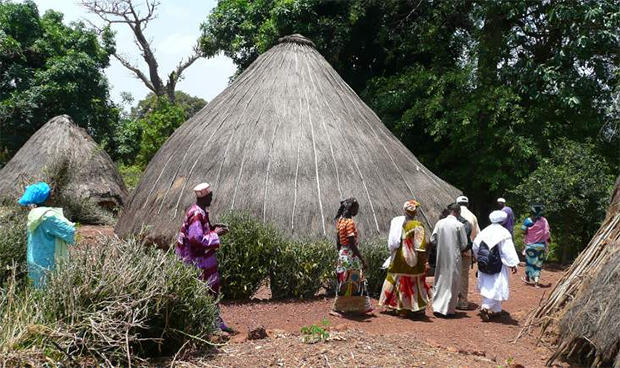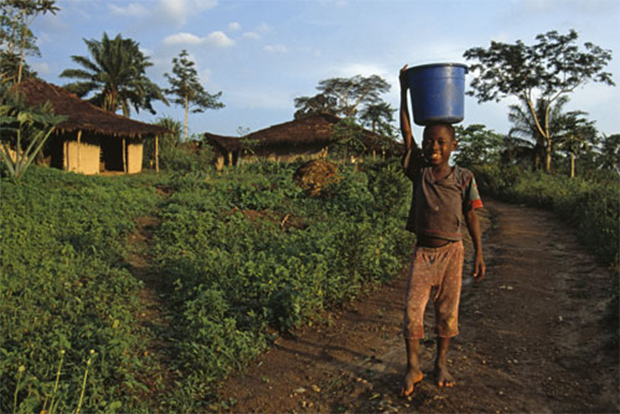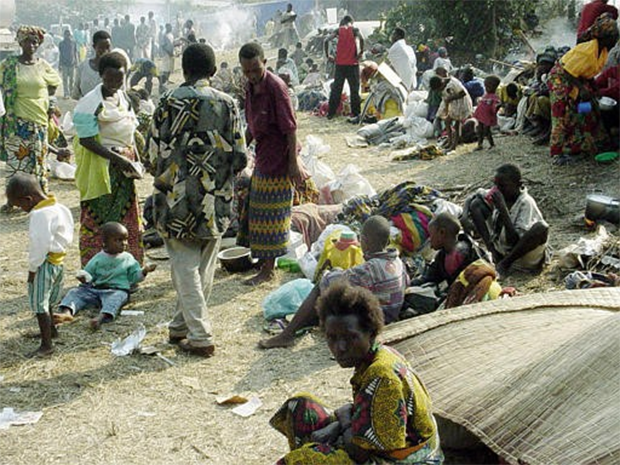|
As cliché as it may be, many believe that money makes the world go
round. Upon second thought, this notion really doesn’t seem to be too
farfetched at all. In general, some of the most powerful people in the
world tend to be the richest ones, and some of the richest people in the
world tend to become some of the most powerful. Whether an accurate unit
of measurement or not, a multitude of people around the world will end
up defining their success through the money they’ve made throughout
their lives. If not anything else, money is an easy unit of measurement
to work with because it’s probably the only directly quantifiable
measure of success there is.
With all of being said, quite possibly the only thing as powerful as
having money, is lacking it. There is such an obvious disparity between
rich and poor all over the world. Furthermore, even the definition of
the word “poor” is relative to the context and location. Having money
can surge a nation forward, while not having it can hold a nation back.
To see just exactly how powerful this is, here are the Top 10 Poorest
Countries in the World.
|
|
10 – Guinea (GDP per capita of $523.10)
Typically, the wealth of a country is measured by its Gross Domestic
Product (GDP) per capita, which is the purchasing power of all goods and
services produced in a country, divided by its population. In essence,
this defines the purchasing power of a single person within the country.
To begin this list is Guinea, with a GDP per capita of $523.10. Guinea
hasn’t seen a period of economic stability since the 1990’s, when their
mining and agricultural industries did them well. Since then however,
Guinea has fallen victim to sever sociopolitical crises, which rapidly
decayed the state of their economy. Much of their economy is still
largely based on agriculture, which is difficult because farmers only
have access to outdated information and obsolete technology, as
investors tend to shy away from the nation entirely. |
|
 |
|
9 – Ethiopia (GDP per capita of $505.00)
Interestingly enough, Ethiopia has historically been a relatively
wealthy nation. Although today, and throughout recent years, this really
hasn’t been the case. To its credit, Ethiopia theoretically has the
right practices in place. They’ve been undergoing a large political
reform, one of the benefits of which is the supposed facilitation of
economic growth and stability. In fact, since 2007, Ethiopia has places
itself above many sub-Saharan African nations in terms of its economic
performance. Although regardless of this, it remains one of the poorest
nations in the world, only holding a GDP per capita of $505.00. This is
a result of Ethiopia’s large population, and dependence on a poorly
funded, underdeveloped, and vulnerable agricultural industry as a staple
in their economy. |
|

|
|
8 – The Gambia (GDP per capita of $488.60)
Next on the list is The Gambia, both one of the African continent’s
smallest and poorest nations. With an area of roughly 11,000 square
kilometers, and a population of roughly 1.8 million people, The Gambia
struggles immensely with trying to make economic leaps forward. Although
there are multiple factors to consider, what is likely their biggest
hindrance is the lack of diversity within their economic system. The
Gambia relies primarily, and almost solely, on farming and fishing to
drive their economy. Both of these are incredibly vulnerable to poor
weather conditions. It also doesn’t help that the soil fertility of the
farming land is typically low, further decreasing both the quantity and
quality of seasonal yields. These alone causes several ripple effects
towards their economy and the subsequent living conditions that the
people of the nation have to endure. With a GDP per capita of $488.60,
and over half of the population living well under the poverty line, the
people of The Gambia are subject to such a poor standard of living that
the nation falls into a “hunger season” when rainfall is at its peak. |
|

|
|
7 – Democratic Republic of the Congo (GDP per capita of $484.20)
Directly juxtaposing the previous entry in the list, the Democratic
Republic of the Congo is Africa’s second largest country, holding a
staggering population of roughly 77 million people. A large population
isn’t always a good thing however, as (especially with poorer nations)
this just means there is less money to go around. What is even more
intriguing about this case, however, is the fact that the Democratic
Republic of the Congo is actually very rich in valuable natural
resources. Similarly, the land expands over 2.35 million square
kilometers, much of which is forests, although it also holds a great
expanse of farmable lands and waters. In spite of all of these things,
the Democratic Republic of the Congo has been subject to a very
unstable, corrupt political system that has been holding back the
potential of the nation’s wealth drastically. As a result of this, with
a GDP per capita of $484.20, a large portion of the nation’s people
remain unemployed, and their lack of money thus results in their living
within greatly inadequate living conditions. |
|
 |
|
6 – Madagascar (GDP per capita of $463.00)
Although this remains a list of the world’s poorest nations, some of the
nations on this list are actually making progress in securing economic
stability for themselves. Madagascar, unfortunately, is not one of these
countries. Over the last 20 years, the standard of living within this
island country has declined significantly. With a population of more
than 20 million people, Madagascar has a GDP per capita of $463.00, with
about 70 percent of the nation’s people living under the poverty line.
Once again reliant primarily on agriculture, the vulnerability of the
industry, lack of potent farming land, and the growing population only
make their economic situation worse and worse over time.
|
|
 |
|
5 – Liberia (GDP per capita of $454.30)
The Second Liberian Civil war was a conflict within Liberia that lasted
from 1999 all the way through 2003. A quick look at history will show
that wars generally don’t leave involved nations economically intact as
a result. Liberia is no exception to this. Having just been subject to a
14 year-long political conflict that not only ravaged lands, but also
needed to make use of some of Liberia’s already finite resources, the
nation was left economically crumbled by the civil war. It is also of no
benefit that Liberia is, once again, primarily reliant on agriculture to
drive its economy. The GDP per capita of the war-torn nation stands at
$454.30, and in 2010, it was estimated that more than 80 percent of the
nation’s people were living less with less than $1.25 per day. With low
yields due to old farming technologies, as well as having overall poor
infrastructure, Libera only marks the halfway point down this list of
the poorest countries in the world.
|
|
 |
|
4 – Niger (GDP per capita of $415.40)
Aside from being one of the world’s poorest, Niger stands as one of the
world’s most underdeveloped nations across several categories. Although
it continues to make developments in reducing infant mortality, and
enhancing education, the development category of poverty has
unfortunately remained rather stagnant, keeping the nation’s GDP per
capita at $415.40. Niger’s economy is driven by two main forces: the
extraction of valuable natural resources available within the nation
(including gold, uranium, and even oil), and small-scale agriculture.
Unfortunately, both of these economic sources can easily be devastated
by random shifts in climate and weather, and thus Niger has struggled in
developing themselves economically.
|
|
 |
|
3 – Central African Republic (GDP per capita of $333.20)
Like Liberia, the Central African Republic has in the past been victim
to war and significant political instability. The landlocked central
African nation also supports very, very poor infrastructure, thus
limiting the efficiency of the distribution of the nation’s resources.
Furthermore, this nation also shares similarities with most other
African nations in that its economy is mostly directed by agriculture,
although an estimated 45 percent of the Central African Republic’s
export revenues are from diamonds. However, because of the poor
infrastructure and governance that the nation has to deal with, only
about 4 percent of the actual arable land that the nation holds is
actually used. As a result, the majority of the working population that
works within the industry suffer immensely, holding the nation to a GDP
per capita of $333.20. |
|
 |
|
2 – Burundi (GDP per capita of $267.10)
Having suffered from recurring violence and political disputes, it is no
surprise that Burundi ranks as the second poorest nation in the world,
even though the country is working tirelessly to rebuild itself. Aside
from the estimated 300,000 civilian casualties resulting in a 67 percent
poverty rate, the violent political rivalries were also detrimental to
Burundi’s agricultural development. Even now, the nation ravaged by war
holds very little farmable land, and any land that may be used for
small-scale farming is still fragile due to the vulnerability to
shifting climates and weather conditions. With the population growing
rapidly, food prices rising, and a GDP per capita of $267.10, Burundi
places as the second poorest country in the world.
|
|
 |
|
1 – Malawi (GDP per capita of $226.50)
Holding a population of 16 million while also being one of the smallest
African nation doesn’t set you up for accumulation or distribution of
wealth. Arguable the most underdeveloped nation in the world, Malawi
suffers greatly in essentially all categories available. Access to
education, general standard of healthcare, infrastructure, and quality
of living conditions are all limited or substandard. Because the nation
is unable to develop in general, they’re for all intents and purposes
stuck with trying to drive their economy using only the most primitive
levels of agriculture. With common weather variations, as well as
injuries and fatalities facilitated by poor health care, Malawi’s world
lowest GDP per capita of $226.50 doesn’t seem like it will be rising too
significantly any time soon.
|
|
 |